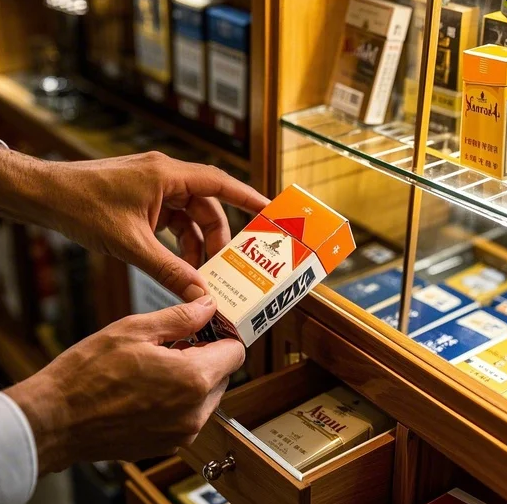关键警告!Unveiling the Richness of Flavor, Aroma and Texture in Every Puff of Cigarette Smoke

Smoking is an experience that can evoke a range of sensations, and for many, the enjoyment of a cigarette goes beyond just the nicotine hit. Often, it is the totality of the **appearance**, **aroma**, and **taste** that contributes to the satisfaction derived from smoking. Having tried many brands and types myself, I've discovered that each cigarette can tell its own story through these dimensions, and in this article, I will delve into the specific components of cigarette taste through descriptive phrases in English. Let’s unravel the complexities of cigarette tasting together, so you can better appreciate your smoking experience.
What Makes a Cigarette's Packaging Important to Its Overall Experience?
The packaging of a cigarette is not merely a protective layer; it serves as an introduction to what you're about to experience. A well-designed box or wrap can elevate expectations and set the tone. A classic example is the **matte finish** cigarette boxes which exude a sense of premium quality. Additionally, the **color scheme** can provide hints about the flavor profile; for instance, darker colors may suggest a **fuller-bodied** taste while brighter hues can imply a **milder** experience.
In cigarettes like **Marlboro**, the iconic red and white packaging indicates a bold smoking experience, while **Virginia Slims**, often housed in sleek, elongated boxes, suggests a more feminine touch characterized by smoothness and grace. Analyzing the **texture** of the pack can also provide hints about quality; a firm box typically indicates careful manufacture, hinting that what lies inside has also been meticulously crafted.
- Matte vs. Glossy: Matte finishes often imply a more refined product.
- Color and Branding: Reflects the intended demographic and flavor expectation.
- Box Type: Soft packs may be seen as more casual compared to the rigid elegance of hard packs.
How Does Aroma Contribute to the Cigarette Experience?

The aroma of a cigarette plays a pivotal role in its overall character. Before the cigarette is even lit, its cold aroma can give you a sense of the potential taste and experience. Each brand showcases distinct notes; for instance, **Dunhill** cigarettes are often described as having a rich, earthy scent, hinting at a more robust flavor. A good descriptive English phrase for this might be, "a deep tobacco aroma with undertones of cedarwood." On the contrary, a brand like **Lucky Strike** may offer a sweeter, lighter aroma, possibly described as "freshly cut grass with hints of caramel."
Once lit, the aroma expands as the smoke starts to dance in the air. The **layered complexity** can be noted; for instance, some tobaccos release lingering notes of nutmeg or spice, providing an intriguing contrast to the tobacco’s natural scent. It's also essential to consider the **strength** of the aroma; a cigarette that smells rich often correlates with a more flavorful smoking experience. This can be captured in phrases like "the smoke enveloped the senses with a warm, creamy essence." In contrast, milder cigarettes might be described as "delicate whiffs of vanilla with a slight freshness."
What Sensations and Flavors Define a Cigarette's Taste?
The taste upon inhalation can be complex and layered, often described using a variety of English terms. Firstly, the **smoothness** of the inhale plays an important role; descriptors like **creamy**, **silky**, and **buttery** can denote a pleasurable experience. Conversely, a more **harsh** smoke can lead to sharp descriptors such as **biting**, **stinging**, or **overwhelming**, indicating a less enjoyable experience. For instance, a full-bodied cigarette might be characterized as “rich, bold, and deeply satisfying,” while a lighter option might be “gentle, with a whisper of sweetness.”

The **concentration** or **strength** of the flavor can also vary drastically. Cigarettes labeled as **full flavor** or **ultra-light** can deceive users based on their expectations. A strong cigarette often provides descriptors like "pungent notes of dark chocolate and leather," whereas a lighter choice may be warmly described as "fresh, with a touch of the citrusy zest." Assessing **spiciness** is another realm; some brands might present notes of **pepper** or **clove**, enhancing the overall experience significantly.
- Smoothness: The physical sensation during inhalation can augment enjoyment.
- Flavor Depth: Depth can range from subtle notes to robust flavors.
- Finish: The aftertaste can linger and evolve, often improving the total experience.
In conclusion, the world of cigarette tasting is rich with sensory experiences waiting to be explored. By focusing on the **appearance**, **aroma**, and **taste**, smokers can engage in a more thoughtful experience rather than simply smoking for the nicotine. Descriptive phrases such as those highlighted throughout this article provide ample vocabulary for articulating the nuances of cigarette tasting. Whether you're a casual smoker or a seasoned aficionado, taking the time to appreciate these elements can enhance your overall enjoyment of each puff.
声明:本站所有文章资源内容,如无特殊说明或标注,均为采集网络资源。如若本站内容侵犯了原著者的合法权益,可联系本站删除。


